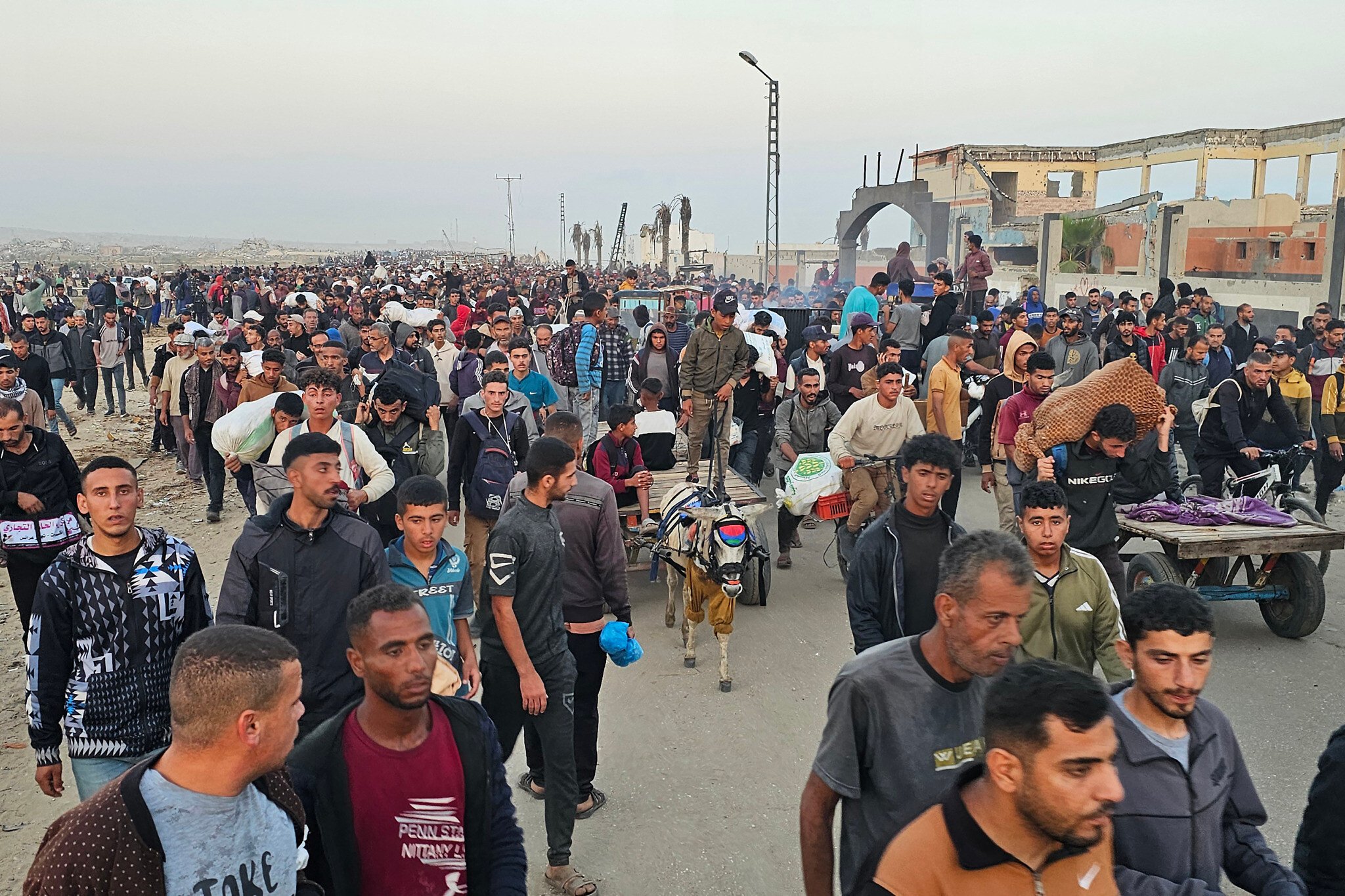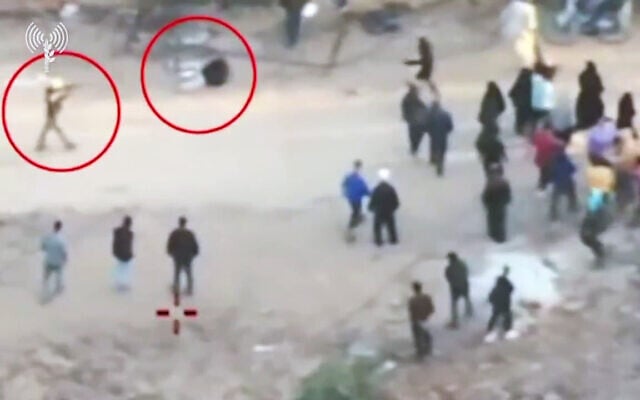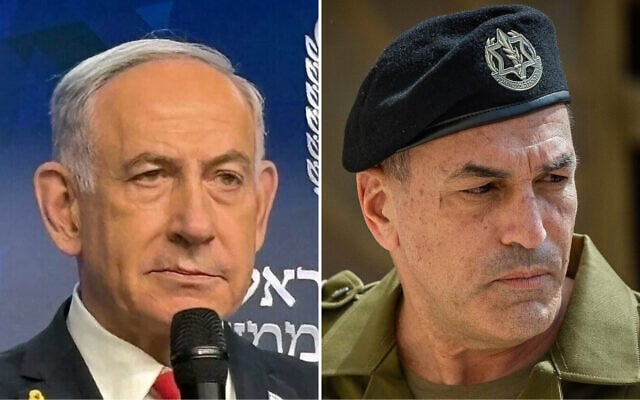



This Editor’s Note was sent out earlier Wednesday in ToI’s weekly update email to members of the Times of Israel Community. To receive these Editor’s Notes as they’re released, join the ToI Community here.
On three successive days this week, Hamas alleged that Israeli troops opened fire at and near the newly established US- and Israel-backed Gaza Humanitarian Foundation’s aid distribution center in Rafah.
On Sunday, the terror group charged that 31 Gazans were killed by Israel, on Monday that the death toll was 3, and on Tuesday that 27 were killed. The way Hamas depicted it, and much of the world reported it, Israel was brutally gunning down Gaza civilians who were desperately seeking access to vital food supplies.
The International Committee of the Red Cross, a relatively credible source of medical information, said its field hospital in Rafah handled a mass casualty influx of 179 cases on Sunday, most of whom had gunshot and shrapnel wounds, and 21 were declared dead on arrival. All patients, it noted, said they had been trying to reach the aid site. On Tuesday, the ICRC reported another mass casualty incident, of 184 patients, 19 of whom were dead on arrival and another eight of whom died soon after. It does not appear to have issued a separate announcement on Monday, but its Tuesday statement referred to four mass casualty incidents in the previous 96 hours. Unlike Hamas, the Red Cross statements did not issue allegations of responsibility for the deaths and injuries.
The Israel Defense Forces has said it fired what it described as warning shots in the area of the aid center — about a kilometer away on Sunday and Monday, it said, and 500 meters away on Tuesday. It has acknowledged that its fire hit an unspecified number of people, but has not acknowledged killing anybody.
At a Tuesday evening televised press conference, IDF Spokesman Effie Defrin said Hamas’s figures were “exaggerated.” Relating to Tuesday’s incident, Defrin said “warning shots were fired” at suspects “who posed a threat to our forces, far from where they were supposed to be.” The shots were aimed so as “not to hit anyone,” he said.
Trying to pierce the fog of war and make sense of conflicting unverifiable claims has been spectacularly difficult ever since Hamas triggered almost 20 months of conflict with its unprovoked invasion of Israel, from territory it fully controlled, slaughtered 1,200 people for the crime of living in Israel, and abducted 251, of whom it still holds 57 captive.
Hamas had spent years turning Gaza into a terror state, its war machine deliberately constructed to utilize Gaza’s civilians as cover — their homes booby-trapped, mosques used as missile and arms depots, schools repurposed as command centers and tunnel access points, hospitals abused as hideouts with Hamas chiefs seeking to evade capture in warrens beneath them. For 20 months, Hamas has worked assiduously to misrepresent Israel as a capricious aggressor viciously targeting the Gazans that the terror chiefs have carefully ensured would find themselves in harm’s way.
Its depiction of Israeli forces cynically killing Gazans desperately seeking food this week has been one of its many tragic successes on this second battlefield — the war for global public, diplomatic and legal legitimacy and support. It’s a battlefield on which official Israel has for decades simply declined to deploy — refusing to allocate resources, to hire and train skilled personnel, to formulate a strategic approach — but never with such dire and abiding consequences as since October 7, 2023.
It is not definitively clear who killed the 61 Gazans Hamas alleges were shot this week at and near the Rafah aid center. It is not definitively clear that 61 Gazans were killed at all. It is not definitively clear who they were. Noncombatant men, women and children? Hamas and other gunmen killed in that area or elsewhere? Victims of Hamas gunfire? (It has been reported that Hamas has set up checkpoints and tried to stop Gazans from reaching aid centers. And the IDF on Sunday published footage it said showed gunmen opening fire at Gazans seeking to collect looted humanitarian aid in Khan Younis.)
It should be manifestly clear, however, that Israel has no interest in deliberately gunning down Gaza noncombatants approaching an aid center set up with Israel and American backing. Hamas, by contrast, has every interest in seeking to doom the aid project, which threatens its hold on Gaza aid, and constitutes an alternative to the trucks of supplies it has routinely commandeered, and either used for its forces or sold off to helpless Gazans to finance its efforts to recruit and revive. The trouble is that Israel does not maintain the mechanisms necessary to make very much at all manifestly clear.
Defrin, new to the post from which his broadly effective predecessor Daniel Hagari was essentially removed, defended the IDF’s failure to respond in anything close to real time to the daily global-headline-making Hamas-led allegations of Israeli mass murder by stressing that the IDF needs to investigate extensively before issuing specific responses to immensely sensitive accusations. The IDF has indeed lost credibility with hurried responses it was subsequently forced to correct regarding incidents such as the March killing of medics in a convoy in southern Gaza.
An effective civilian public diplomacy mechanism, however, would at least be capable of immediately explaining the context in which allegation and counter-allegation are hurled. Except that Israel refuses to properly task and staff such a hierarchy. According to the former head of the Public Diplomacy Directorate at the Prime Minister’s Office, Gadi Ezra, who left the post when the current government took office, the cabinet has not held a single meeting to discuss its public diplomacy strategy. Hundreds of millions of shekels were recently allocated to the Foreign Ministry for some kind of media room; it does not provide any kind of real-time response to unfolding events.
Official Israeli defeatism — and that’s what is, defeatism — in the battle for world opinion is unforgivable. Competent public diplomacy would not shift the needle from one side to the other. It would nudge it a little, however, and give those who are minded to delve into the cause and effect of this conflict a basis for doing so.
Global judgments of right and wrong, aggressor and victim, however, are also affected by the declared policy governing the conduct of the war.
The IDF has stated that it is seeking to raise its hold on Gaza to 75% in the next few weeks, and push Gazans into limited largely coastal areas in the south, center and north of the Strip. But the IDF’s Chief of Staff Eyal Zamir has also said that it seeks to keep the war as short as possible in attaining victory — which he defined last week as returning the hostages, defeating Hamas and dismantling its rule. This is “not an endless war,” he insisted.
Prime Minister Benjamin Netanyahu, however, says the war will not end until US President Donald Trump’s vision for the relocation of all Gazans is carried out. And far-right ministers Bezalel Smotrich and Itamar Ben Gvir are avowedly bent on Israel permanently reoccupying and resettling a Gaza emptied of its Palestinian populace.
An initial IDF probe into Tuesday’s shootings reportedly has found that Palestinians heading to the aid center “got lost” en route to the distribution point, approached IDF soldiers, and were fired on when they failed to retreat. Other indications, some of which have been confirmed in military briefings, are that troops fired this week at what the IDF has called “suspects” who headed to the center before it was open and/or approached it from outside the designated safe route. Gaza, of course, is a war zone, and the IDF is charged with the highly complex task of protecting the aid distribution centers from deadly Hamas attack, protecting the intended aid recipients from Hamas, and ensuring the safety of its own troops — four of whom have been killed by Hamas elsewhere in the strip this week.
The fog of this particular juncture of the war would be cleared a little were the IDF to enable access for independent reporters to the new aid operation. But, as throughout this conflict, the IDF thinks it has more to lose via the risk of local or international war reporters getting killed or injured in Gaza than it has to gain from enabling independent reporting there.
Declining to provide access, failing to provide detailed real-time information and context on fast-changing and deadly events, and with its inadequate responses undermined by its own ministers’ radical policy goals for Gaza, Israel is failing itself and its would-be supporters on the second battlefield even as it continues to struggle to eliminate the Hamas threat on the first.
On Wednesday, the Gaza Humanitarian Federation suspended its operations for the day, to enable a logistical overhaul that aims to ensure it can handle the larger-than-expected crowds and coordinate more effective security procedures with the IDF — essentially to prevent the recurrence of whatever exactly has been happening this week. Hopefully, the one-day pause will enable an effective reset.
It will take a lot more than a day to resuscitate Israel’s public diplomacy, however, and there remains absolutely no sign that the government intends to embark on any such effort.
And worst of all, in this terrible, Hamas-sparked war, Israel’s cause and legitimacy are continually and deeply harmed by the empty-and-occupy Gaza goals of two coalition parties whose agenda dominates government policy.


